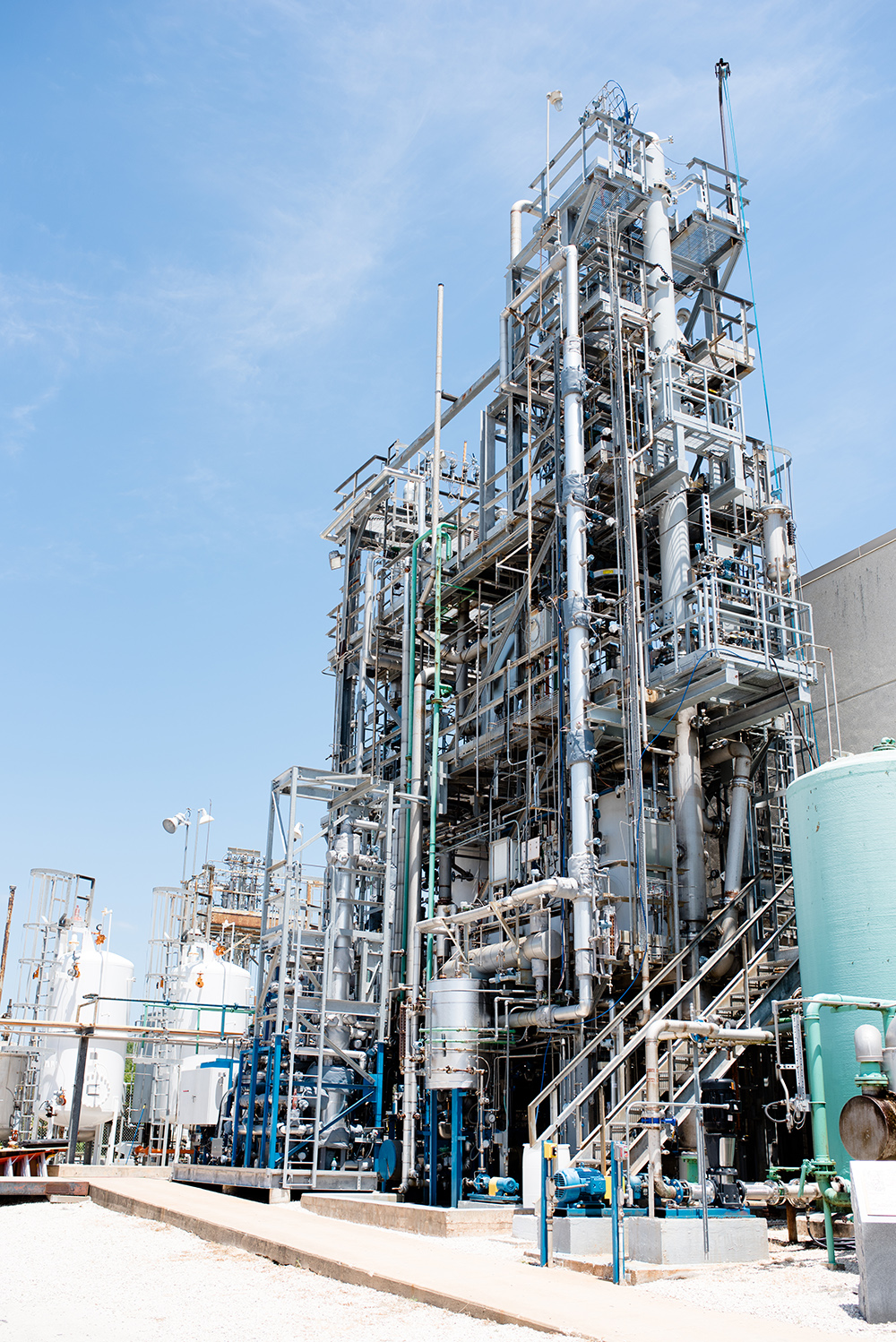Just 10 miles up the road from UT’s main campus sits the university’s other campus—one dedicated primarily to research with nearly 500 acres and over 25 major labs and centers. The J.J. Pickle Research Campus (PRC), known to many but still somehow steeped in mystery, began as a magnesium processing plant during World War II before being purchased by the university in 1949. After decades of site development and several changes to its name, the PRC now serves as one of the nation’s leading research hubs, where engineering innovations come to life and world-changing discovery happens at a grand scale. Join us for a visual tour of four of the campus’ biggest—and seemingly most hidden—locations.

THE REACTOR
At the end of a maze of hallways in one of UT’s most secure buildings is the Nuclear Engineering Teaching Laboratory’s TRIGA Nuclear Research Reactor. The core of the reactor can be seen through a 24-foot-tall tank of water that glows blue during operation. While the reactor has many applications, one of its primary uses is to analyze the composition, particularly trace amounts of elements, of samples—sent to Austin from all corners of the world—that are used in archaeological, environmental and materials research, in a process called neutron activation analysis. The UT reactor is one of only 31 research and test reactors in the United States and one of three in Texas.

THE MEGASTRUCTURE
In the massive Ferguson Structural Engineering Lab (FSEL), researchers and students from the Cockrell School study the response of structures under extreme loads due to earthquakes, wind, fire and blast with the goal of improving civil infrastructure and advancing modern society. The lab—a 45,000-square-foot, hanger-like facility the length of a football field—allows for ultra-large-scale behavioral studies of real-life structures such as bridges, buildings, nuclear power plants and others. With a community of some of the nation’s leading structural engineers, and with advanced simulation tools to complement their unique large-scale experimental capabilities, FSEL continues to be a world-class destination for top-tier structural engineering research.

THE SUPER POWER
A soft hum, an assortment of blinking lights, miles of cables and row upon row of whirring fans combine to create Stampede2 — UT’s flagship supercomputer and one of the largest at any university around the world. With a processing power of 18 petaflops, meaning it is processing 18×10¹⁵ operations in one second, Stampede2 is essentially as powerful as 100,000 desktop computers combined. Housed in the Texas Advanced Computing Center, Stampede2 makes large-scale research possible, serving thousands of researchers and students across the nation in areas ranging from health care to climate to energy. Thanks to Stampede2, the intense number-crunching and simulating that once took years now takes only hours or days.

THE SIMULATOR
If you’re visiting the James R. Fair Process Science and Technology Center for the first time, you might just think you’ve stepped off a university campus and into a corporate industrial chemical plant. As a large-scale testing ground and simulation platform supported by giants like ExxonMobil, Phillips 66, Emerson Automation Solutions, Shell and Eastman, the facility is operated by the Separations Research Program and facilitates cutting-edge experiments on new separations technologies and methods. Technologies are being developed in collaboration with the industry partners to enhance distillation capabilities of fluid mixtures by improving mass transfer and hydrodynamics, which can then lead to decreased energy consumption and lower capital costs. The researchers and students working in the center are investigating distillation, process optimization and control, liquid-liquid extraction, oil/water separations, complex fluid behavior and many other areas of separations technology. When it comes to the sheer size and grandeur of university research, it doesn’t get much better than this.